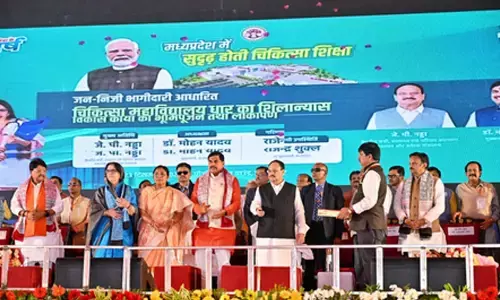Unemployment at peak: Why govt is denying CMIE's jobs data?

To safeguard its image, govt doesn’t need better messaging; It needs better policies
The assessment of the Centre for Monitoring Indian Economy (CMIE) that as much as 50 per cent of people of legal working age are no longer interested in hunting for jobs has evoked a sharp reaction from the government. It has, in an unusual move, issued a statement denying the facts presented by the CMIE and also questioned the validity and methodology of collecting such data.
The evident concern over the CMIE data is clearly because it presents a rather depressing picture of the jobs market. According to the scenario outlined by the research firm which specialises in studies of labour and employment, the overall labour force participation rate dropped from 46 to 40 per cent between 2017 and 2022. The situation is worse for women. As many as 21 million disappeared from the work force over this period. This left only nine per cent of the eligible population employed or looking for jobs.
The recent studies made by CMIE now indicate that over half of the 900 million people of working age, are no longer seeking jobs. This data must be seen in the context of the fact that one third of the country's population is between the ages of 15 and 64. A Mckinsey report says that India needs to create at least 90 million new non-farm jobs by 2030, a feat that would require growth to be in the region of 8 to 8.5 per cent annually.
Providing latest data on unemployment, the CMIE disclosed that the labour force fell by 38 lakhs in March to the lowest level in the last eight months. Labour force participation rate fell to 39.5 per cent, lower than39.9 in February and 39.6 in June last year. In the absence of any Covid-linked movement curbs, it noted that the low labour numbers in March showed the biggest signs of the country's economic distress. At the same time, it must be conceded that one of the reasons for the low LFPR for women. In December 2021, this was as high as 67 per cent for men but only about 9 per cent for women. So the abysmally low representation of women brings down the overall LFPR.
The government's denial of the CMIE's findings must be viewed in the backdrop of the fact that the monthly data released by this agency has become the primary source material for information on employment in this country. Given the fact that there are few agencies interested in handling such data, it would probably be more in the government's interest to collaborate or support the research firm's in its endeavours. It must be pointed out that accurate data is essential for policy making. In fact, if there are indeed any lacuna in the methodology adopted by the research firm, these issues can surely be ironed out.
Employment data is becoming increasingly critical as the government is looking to provide newer avenues for employment. It has to be accepted that despite the growth of the manufacturing sector and even of services which have expanded exponentially, the dream of any middle class Indian in small towns and rural areas is to get a government jobs. There are many reasons for this anxiety to get 'sarkaari naukris' (government jobs). The first is the security of employment, which eliminates the fear of getting fired suddenly, as is possible in the private sector. The second is the access to several facilities including housing in some areas as well as free healthcare that reduces living costs for most families. And the third is the prospect of pensions and being secure in one's old age. It is these lures that leads to lakhs applying for limited jobs in the railways or police.
It is possible, however, to offer jobs in the manufacturing sector that can also provide access to similar facilities, though it may not include pensionability. A focus is thus now being put on creating jobs through organised industry. One area where as many as 6 million jobs are expected to be created over the next five years is by implementation of the production-linked incentive schemes for various sectors. This started off in the electronics industry and its success in this area led to its extension to other industries. The scope for expansion via the PLI scheme can be envisaged from the fact that the white goods industry including air conditioners is looking to raise output by nearly four to five times. It is estimated that nearly two lakh jobs will generated directly or indirectly through these new investments.
Yet it cannot be denied that there are some issues related to wages and benefits that have made manufacturing jobs lose their lustre in recent years. Owing to rigid labour laws regarding hiring and firing of employees, industries are increasingly turning to contractual labour. And wages for contract workers have been stagnant and lower than salaries for other jobs in the services industries. This is a lacuna that needs to be dealt with urgently, as it has meant that workers are resorting to rural jobs schemes rather than take up low-paying jobs in industrial units.
Another area that needs greater attention is the services sector especially areas like tourism and hospitality which can absorb millions in various types of employment. More relief and incentives need to be given to this sector which has been hit hard by movement curbs during the pandemic.
At the same time, it would be wise to accept the findings of the CMIE as a realistic look at the jobs scenario rather than to dismiss the data as being misleading. Such research information can provide guidance in formulating policies to rectify the situation. So it would be a good idea not to shoot the messenger in this case.


















